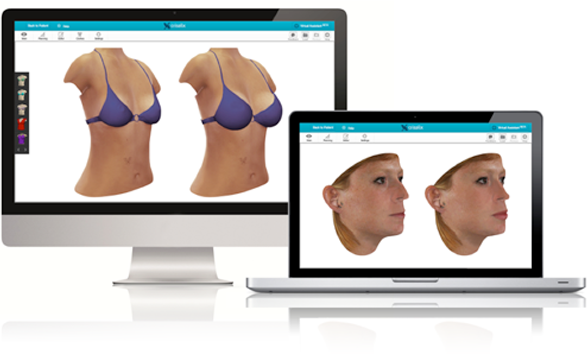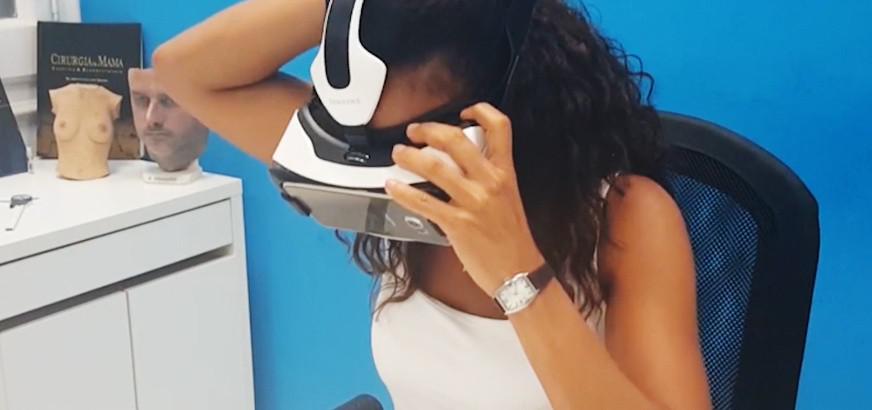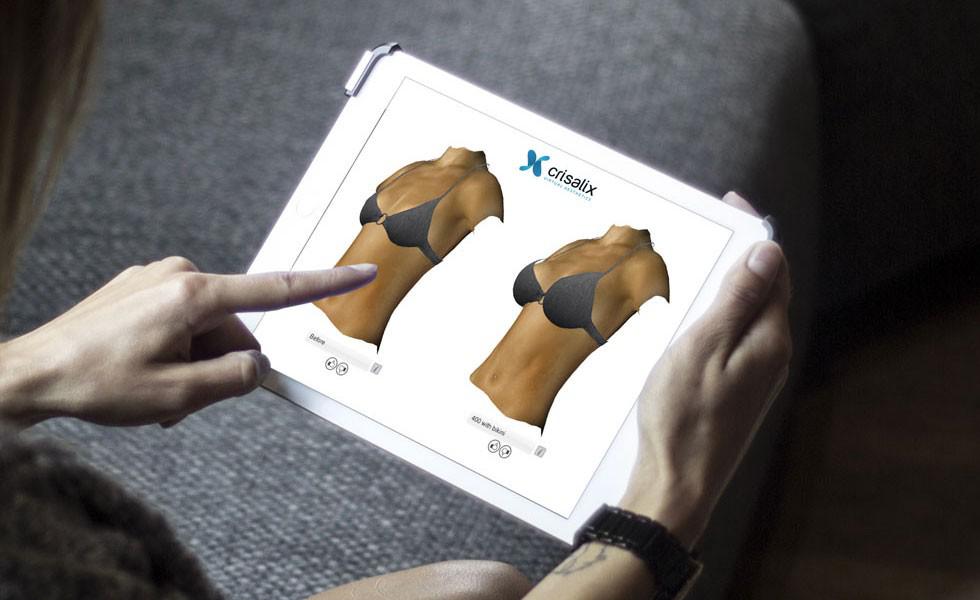
For any patient having any kind of cosmetic or aesthetic surgery procedure, an awareness of what sorts of results are possible is very important. People can have certain ideas in their head when they visit a cosmetic surgeon. They may want something they perceive as a flaw corrected and may feel that with surgery they will look ‘perfect’. I always try to explain to a patient that ‘perfect’ is not possible, nor should it be an aspiration. The results of a procedure should make a person look like the best version of themselves, not ‘perfect’ and certainly not like anybody else.
This is where an experienced surgeon, with both expert knowledge and an aesthetic eye is invaluable. Whether you are considering breast augmentation, rhinoplasty (nose job), or liposuction, the surgeon should be able to sculpt and create the best results that will sit well with the person’s appearance.
In the past, we have used computer programmes to show patients an approximation of ‘before’ and ‘after’. It gives them a visual representation of what is possible. This for me is a very important part of the consultation process and helps to keep both patient and surgeon on the same page. With new advances in technology, this aspect of surgery is becoming increasingly effective.
One development I’m particularly excited about is Crisalix, a 3D cosmetic surgery simulation app that allows you capture a 3D image of a patient’s face or body and show them exactly what their proposed procedure will look like. To the best of my knowledge, only myself and one other colleague in Dublin, Ireland, are using this technology, positioning us at the forefront of innovation in cosmetic surgery.

I take a 3D scan of a patient that we can then upload and show to them. So, for example, if a patient is considering a breast augmentation, I can scan their body image and then show them gradual changes in size and shape, and show them what their breasts will look like from every angle.
The patient can put on a pair of 3D imaging goggles so that they can actually see what the proposed breast augmentation will look like on their body to get a perfect view of how it suits their body shape and build.
It is also very effective for a nose job and it works on the same principle. You can show a patient a 3D image of their face and make gradual changes to the nose until they are happy with the planned outcome. Otherwise, you can end up with a very difficult discussion with the patient whereby they don’t have a proper visual idea of what the changes will look like, and I won’t know exactly how much of a change they are looking for.

A particularly good aspect is that you can then email the image link to patients. This means they can access the images at home and see what different changes will look like. No new software or programmes are needed to access the image: all the patient needs is a link. They can discuss the changes with loved ones and decide, for example, on the size or level of breast augmentation they want and what suits their overall body shape.
When these aspects are all explained and shown to the patient before a procedure, it is valuable information they can understand and use to make an informed decision.
Technology such as Crisalix makes everything clearer for both the patient and surgeon from the outset, which will help to ensure satisfactory results for all concerned.
You can read more about the device here www.crisalix.com/en
If you are considering a cosmetic surgery procedure, we can advise on the best options for you. Contact us to arrange a consultation.
Find out all you need to know about cosmetic procedures and the factors you need to consider in our free guide: Considerations Before Deciding on Cosmetic Surgery and Post-Treatment Care:
Download Mr. Chan's Guide to Cosmetic Surgery Considerations

For any patient having any kind of cosmetic or aesthetic surgery procedure, an awareness of what sorts of results are possible is very important. People can have certain ideas in their head when they visit a cosmetic surgeon. They may want something they perceive as a flaw corrected and may feel that with surgery they will look ‘perfect’. I always try to explain to a patient that ‘perfect’ is not possible, nor should it be an aspiration. The results of a procedure should make a person look like the best version of themselves, not ‘perfect’ and certainly not like anybody else.
This is where an experienced surgeon, with both expert knowledge and an aesthetic eye is invaluable. Whether you are considering breast augmentation, rhinoplasty (nose job), or liposuction, the surgeon should be able to sculpt and create the best results that will sit well with the person’s appearance.
In the past, we have used computer programmes to show patients an approximation of ‘before’ and ‘after’. It gives them a visual representation of what is possible. This for me is a very important part of the consultation process and helps to keep both patient and surgeon on the same page. With new advances in technology, this aspect of surgery is becoming increasingly effective.
One development I’m particularly excited about is Crisalix, a 3D cosmetic surgery simulation app that allows you capture a 3D image of a patient’s face or body and show them exactly what their proposed procedure will look like. To the best of my knowledge, only myself and one other colleague in Dublin, Ireland, are using this technology, positioning us at the forefront of innovation in cosmetic surgery.

I take a 3D scan of a patient that we can then upload and show to them. So, for example, if a patient is considering a breast augmentation, I can scan their body image and then show them gradual changes in size and shape, and show them what their breasts will look like from every angle.
The patient can put on a pair of 3D imaging goggles so that they can actually see what the proposed breast augmentation will look like on their body to get a perfect view of how it suits their body shape and build.
It is also very effective for a nose job and it works on the same principle. You can show a patient a 3D image of their face and make gradual changes to the nose until they are happy with the planned outcome. Otherwise, you can end up with a very difficult discussion with the patient whereby they don’t have a proper visual idea of what the changes will look like, and I won’t know exactly how much of a change they are looking for.

A particularly good aspect is that you can then email the image link to patients. This means they can access the images at home and see what different changes will look like. No new software or programmes are needed to access the image: all the patient needs is a link. They can discuss the changes with loved ones and decide, for example, on the size or level of breast augmentation they want and what suits their overall body shape.
When these aspects are all explained and shown to the patient before a procedure, it is valuable information they can understand and use to make an informed decision.
Technology such as Crisalix makes everything clearer for both the patient and surgeon from the outset, which will help to ensure satisfactory results for all concerned.
You can read more about the device here www.crisalix.com/en
If you are considering a cosmetic surgery procedure, we can advise on the best options for you. Contact us to arrange a consultation.
Find out all you need to know about cosmetic procedures and the factors you need to consider in our free guide: Considerations Before Deciding on Cosmetic Surgery and Post-Treatment Care:
Download Mr. Chan's Guide to Cosmetic Surgery Considerations